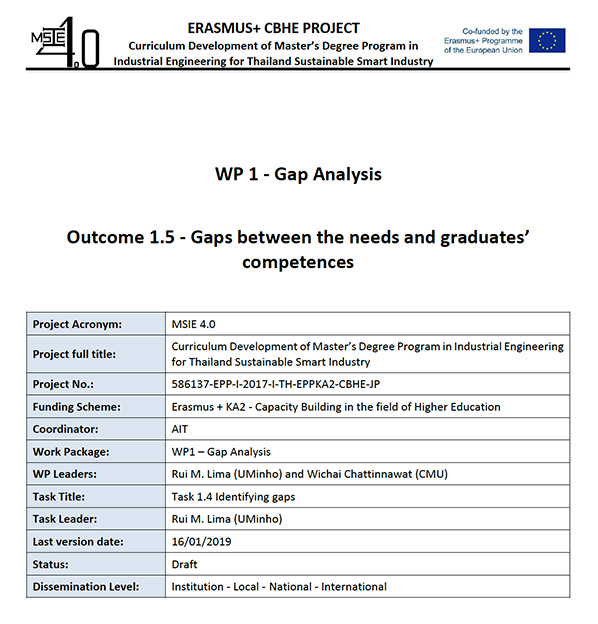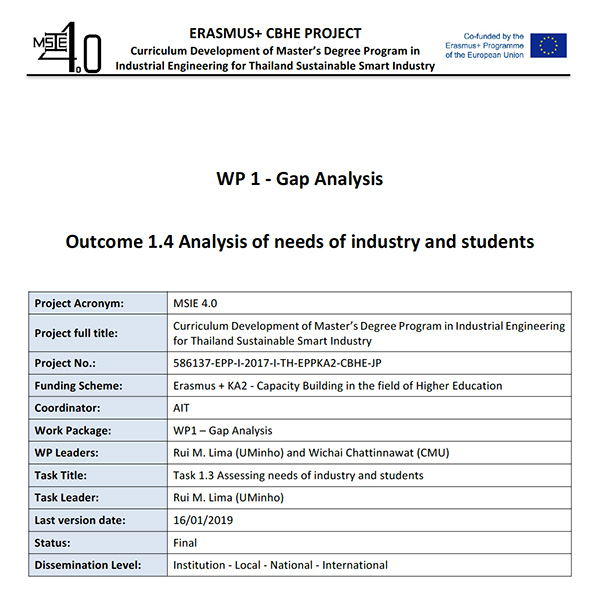Based on a wide analysis of the target group needs, the identified gaps and on world trends and developments in Industrial Engineering, the factors that will provide a competitive advantage to the curriculum were identified and presented in this report. The process of finding the referred competitive factors was based on Blue ocean strategy, applied in several brainstorming cycles with the project partners. After identifying the competitive factors for curricula for Master’s Degree in Industrial Engineering to support sustainable smart industry, a new set of brainstorming cycles was conducted to apply the Eliminated (E), Reduce (R), Raise (R) and Create (C) – ERRC grid, to obtain a value curve representing the competitive strategy for the MSIE4.0 program. This MSIE 4.0 curriculum will focus on building both technical and transversal competences for graduates with thematic active learning activities, especially those immersing students into practical, real-world problems. For technical competences, the priority will be on smart production and on smart products and co-create design, with a focus on big data and real-time data/sensors. Last but not least, the curriculum will be developed with a modular concept to provide flexibility to different groups of students.
A full report is available here



